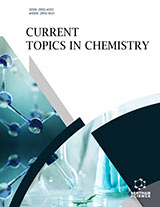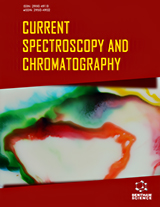Abstract
Hypoxia is a common feature observed in solid tumours. It is a target of interest in oncology as it has been found to be closely associated with tumour progression, metastasis and aggressiveness and confers resistance to a variety of chemotherapeutic agents as well as radiotherapy. AQ4N, also known as banoxatrone or 1,4-bis-[2-(dimethylamino-Noxide) ethyl]amino-5,8-dihydroxyanthracene-9,10-dione is a very promising bioreductive prodrug. This paper, describes an application of MALDI-MSI combined with ion mobility separation and an "on-tissue" bottom up proteomic strategy to obtain proteomic data from AQ4N dosed tumour xenograft tissue sections. These data are then correlated with the drug distribution determined also using MALDI-ion mobility separation-mass spectrometry imaging (MALDI-IMS-MSI). PCA-DA and OPLS-DA have been used to compare treated and untreated xenografts and of note is the marked increase in expression of Histone H3.
Keywords: Hypoxia, AQ4N, MALDI, ion mobility, mass spectrometry imaging
Current Analytical Chemistry
Title:Targeting of Hypoxia in AQ4N-treated Tumour Xenografts by MALDIIon Mobility Separation-Mass Spectrometry Imaging
Volume: 9 Issue: 2
Author(s): Marie-Claude Djidja, Simona Francese, Emmanuelle Claude, Paul Loadman, Chris Sutton, Steve Shynder, Patricia Cooper, Laurence H Patterson, Vikki A Carolan and Malcolm R. Clench
Affiliation:
Keywords: Hypoxia, AQ4N, MALDI, ion mobility, mass spectrometry imaging
Abstract: Hypoxia is a common feature observed in solid tumours. It is a target of interest in oncology as it has been found to be closely associated with tumour progression, metastasis and aggressiveness and confers resistance to a variety of chemotherapeutic agents as well as radiotherapy. AQ4N, also known as banoxatrone or 1,4-bis-[2-(dimethylamino-Noxide) ethyl]amino-5,8-dihydroxyanthracene-9,10-dione is a very promising bioreductive prodrug. This paper, describes an application of MALDI-MSI combined with ion mobility separation and an "on-tissue" bottom up proteomic strategy to obtain proteomic data from AQ4N dosed tumour xenograft tissue sections. These data are then correlated with the drug distribution determined also using MALDI-ion mobility separation-mass spectrometry imaging (MALDI-IMS-MSI). PCA-DA and OPLS-DA have been used to compare treated and untreated xenografts and of note is the marked increase in expression of Histone H3.
Export Options
About this article
Cite this article as:
Djidja Marie-Claude, Francese Simona, Claude Emmanuelle, Loadman Paul, Sutton Chris, Shynder Steve, Cooper Patricia, H Patterson Laurence, A Carolan Vikki and R. Clench Malcolm, Targeting of Hypoxia in AQ4N-treated Tumour Xenografts by MALDIIon Mobility Separation-Mass Spectrometry Imaging, Current Analytical Chemistry 2013; 9 (2) . https://dx.doi.org/10.2174/1573411011309020007
| DOI https://dx.doi.org/10.2174/1573411011309020007 |
Print ISSN 1573-4110 |
| Publisher Name Bentham Science Publisher |
Online ISSN 1875-6727 |
 12
12
- Author Guidelines
- Bentham Author Support Services (BASS)
- Graphical Abstracts
- Fabricating and Stating False Information
- Research Misconduct
- Post Publication Discussions and Corrections
- Publishing Ethics and Rectitude
- Increase Visibility of Your Article
- Archiving Policies
- Peer Review Workflow
- Order Your Article Before Print
- Promote Your Article
- Manuscript Transfer Facility
- Editorial Policies
- Allegations from Whistleblowers
- Announcements
Related Articles
-
Endothelium: A Target for Harmful Actions of Metals
Current Hypertension Reviews Novel Pentablock Copolymer Based Nanoparticles Containing Pazopanib: A Potential Therapy for Ocular Neovascularization
Recent Patents on Nanomedicine Regulation of Glycolytic and Mitochondrial Metabolism by Ras
Current Pharmaceutical Biotechnology Structural Activity Relationship and Importance of Benzothiazole Derivatives in Medicinal Chemistry: A Comprehensive Review
Mini-Reviews in Organic Chemistry Stable Synthetic Bacteriochlorins: Potent Light-Activated Anti-Cancer Drugs
Current Organic Chemistry Targeting Lipoxygenases (LOs): Drug Design And Discovery
Current Enzyme Inhibition Endothelial Therapy of Atherosclerosis and its Risk Factors
Current Vascular Pharmacology Nanoceria: A Novel Cytoprotective Drug Delivery Carrier
Current Nanomedicine Nitroimidazole Radiopharmaceuticals in Bioimaging: Part I: Synthesis and Imaging Applications
Current Radiopharmaceuticals Studies on the IC<sub>50</sub> of Trisubstituted Thiazoles as Cdc7 Kinase Inhibitors
Letters in Drug Design & Discovery Redefining the Role of Long-Acting Phosphodiesterase Inhibitor Tadalafil in the Treatment of Diabetic Erectile Dysfunction
Current Diabetes Reviews Epidermal Growth Factor Receptor (EGFR) Tyrosine Kinase Inhibitors from the Natural Origin: A Recent Perspective
Anti-Cancer Agents in Medicinal Chemistry Contrast Agents in X-Ray Computed Tomography and Its Applications in Oncology
Anti-Cancer Agents in Medicinal Chemistry Mechanisms Underlying Chemopreventive Effects of Flavonoids via Multiple Signaling Nodes within Nrf2-ARE and AhR-XRE Gene Regulatory Networks
Current Chemical Biology Recent Advances in Polymer Drug Conjugates
Mini-Reviews in Medicinal Chemistry Disposition of Pharmacologically Active Dietary Isoflavones in Biological Systems
Current Drug Metabolism Osteoprotegerin A Physiological and Pharmacological Inhibitor of Bone Resorption.
Current Pharmaceutical Design Marine Depsipeptides as Promising Pharmacotherapeutic Agents
Current Protein & Peptide Science Recent Developments in Targeted Therapies of the RAF-MEK and PI3KAKT Pathways in Cancer Treatment
Current Cancer Therapy Reviews Recent Developments of Small Molecule EGFR Inhibitors Based on the Quinazoline Core Scaffolds
Anti-Cancer Agents in Medicinal Chemistry


























